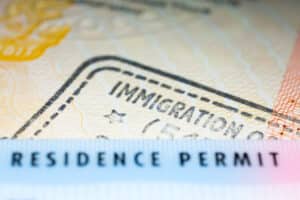Where in the World Does the UK’s Migrant Workforce Hail?

<?xml encoding=”utf-8″ ?????????>
Immigration has long been a key part of the British workforce. Having had to rebuild after two World Wars, particularly after World War II, the country has often relied on skilled and unskilled workers from overseas.
Of course, much of the propaganda of the successful Brexit campaign was centred on slowing or stopping immigration outright, thus leading to the workforce shortages that we’re experiencing today.
This has even come to the point where the prime minister and leader of the pro-Brexit Conservatives party, Rishi Sunak, has been warned against focussing on reducing immigration numbers. Key industries are lacking staff, and the numbers aren’t coming from the British-born population. So, where has the UK’s migrant workforce hailed in the past, and can we rely upon a post-Brexit system to try to invite more to work here from overseas?
Increased immigration correlating with increased GDP
As has been plotted out by Macro Trends, the UK’s migrant population ranged from 1.6 million in 1960 and grew steadily to 3.65 million by 1990. It’s at this point that migration ramps up. In 1990, migrants accounted for 6.39 per cent of the population. The number grew to 9.84 per cent in 2005, 12.3 per cent in 2010, and 13.2 per cent in 2015. Per the same source, between 1990 and 2015, GDP grew from $1,093.21 billion to $2,934.86 billion.
The GDP almost tripled during a window that the migrant population slightly more than doubled (2.34x). While only making up for around 0.35 per cent of the population at the time, one of the big migrant worker pushes came in the 1950s with the ‘Windrush.’ By 1958, the combined workforce from the Caribbean, India, and Pakistan numbered 180,000. While immigration legislation did start to tighten after the rush, NHS considerations always took precedence.
Prior to Brexit, the open market of the EU was, of course, the main source of migrant work. In 2021, nine per cent of the population, or 6 million people, weren’t UK nationals, and only 3.4 million of them were EU nationals. In 2020, half of the highly educated EU-born migrants to come to the UK were in low to low-medium-skilled jobs. Indian and EU-14 migrants, however, were found to be more likely to achieve high-skilled jobs than UK-born workers.
Paths available to bolster the migrant workforce
Even with the roadblocks put up by Brexit, there are still ways to bring in migrant workers and for immigrants to successfully get to the UK. Working with seasoned immigration lawyers presents the most clear-cut way to file an application for a visa and achieve immigration without any hiccups along the way. For this, drafting the initial application, preparing cover letters, and collating the necessary documentation is done ahead of time, as is pre-empting anything that the Home Office may question on their eligibility checklist.
Services such as this help immigration visa applications go through with mitigated risk of delay or refusal, enabling a more assured approach to hiring skilled workers from abroad. Of course, businesses also have to find workers in the first place. Monster, Indeed, and Reed are well-known job sites that UK employers look through, as is LinkedIn to a lesser extent. Perhaps the best way to go about it is through an agency such as Agency Central.
Immigration continues to be a major part of the British economy, and right now, we need skilled migrant workers, perhaps more than at any time since the 1960s.




